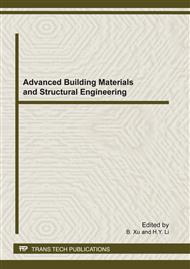p.123
p.128
p.132
p.138
p.142
p.151
p.155
p.160
p.164
Feasibility Study on Building Distributed Virtual Environment Using Mobile Agent Technology
Abstract:
Peer-to-peer (P2P) architectures have been proposed as an efficient and truly scalable solution for distributed virtual environments (DVEs). However, heavy and unbalanced network load has restricted the development of large scale DVEs. To solve this problem, this paper attempts to apply the mobile agent technology in DVEs. First, the virtual environment space was divided into a number of adjacent sub-spaces. Then, using the agent mobility, entities models moved themselves to the adjacent sub-space, and completed interactions with other entities in the sub-space. As a result, a significant part network load is transformed into local calculation load. The theoretical analysis results show that it is feasible and effective to ease the network communications bottleneck in the expansion of the DVEs.
Info:
Periodical:
Pages:
142-147
Citation:
Online since:
February 2012
Authors:
Keywords:
Price:
Сopyright:
© 2012 Trans Tech Publications Ltd. All Rights Reserved
Share:
Citation:


